Tension Headaches and Acupuncture Treatment
Tension headaches are among the most common health complaints worldwide, affecting millions of people with their hallmark tight, pressing pain. Often described as a band-like sensation around the head, these headaches can disrupt daily life, reduce productivity, and cause significant discomfort. While over-the-counter medications like NSAIDs provide temporary relief, their side effects and potential for overuse have led many to seek natural, non-pharmacological alternatives. Acupuncture, a cornerstone of Traditional Oriental Medicine (TOM), has emerged as a promising solution for managing tension headaches effectively. This comprehensive guide explores the nature of tension headaches, the science behind acupuncture’s effectiveness, key acupoints used in treatment, and practical tips for integrating this therapy into your wellness routine.
- Understanding Tension Headaches: Causes and Symptoms
- Acupuncture Treatment: How Does It Work?
- The Effectiveness of Acupuncture for Tension Headaches
- Key Acupoints for Treating Tension Headaches
- How Acupuncture Sessions Are Conducted
- Safety and Side Effects of Acupuncture
- Practical Tips for Getting Started with Acupuncture
- Conclusion: A Path to Natural Headache Relief
Understanding Tension Headaches: Causes and Symptoms
Tension-type headaches (TTH) are the most prevalent form of headache, impacting up to 78% of the global population at some point in their lives. According to the World Health Organization, half to three-quarters of adults aged 18–65 experience a headache annually, with TTH being the second most common chronic disease worldwide. Characterized by mild to moderate bilateral pain, TTH often feels like a tight band or pressure around the forehead, temples, or back of the head. Unlike migraines, tension headaches are not typically accompanied by nausea, vomiting, or sensitivity to light and sound, and they do not worsen with physical activity.
Maybe You Need:

The exact cause of tension headaches remains unclear, but several factors are known to contribute:
- Stress: Emotional or psychological stress triggers the release of stress hormones like cortisol, which can cause muscle tension and constrict blood vessels, leading to headache pain.
- Muscle Tension: Prolonged poor posture, such as slouching at a desk or straining the neck during screen time, can lead to tightness in the neck and shoulder muscles, a common trigger for TTH.
- Sleep Disturbances: Insufficient or poor-quality sleep can exacerbate muscle tension and lower the body’s pain threshold.
- Diet and Lifestyle: Dehydration, irregular meals, excessive caffeine, or lack of physical activity can contribute to headache onset.
- Environmental Factors: Bright lights, loud noises, or prolonged exposure to screens may induce or worsen tension headaches.
Symptoms of tension headaches vary but often include:
- A dull, aching pain or pressure in the forehead, temples, or back of the head.
- Tightness or stiffness in the neck and shoulders.
- Sensitivity to stress or fatigue.
- Difficulty concentrating due to persistent discomfort.
For many, tension headaches are episodic, occurring less than 15 days per month. However, chronic TTH, defined as headaches occurring 15 or more days per month, can significantly impair quality of life. Given the limitations of conventional treatments, such as gastrointestinal side effects from NSAIDs or the risk of medication-overuse headaches, alternative therapies like acupuncture have gained attention for their efficacy and safety.
Acupuncture Treatment: How Does It Work?
Acupuncture is a millennia-old practice rooted in Traditional Oriental Medicine, which involves the insertion of thin, sterile needles into specific points on the body, known as acupoints. According to TOM, the body’s vital energy flows through a network of channels called meridians. Disruptions or blockages in this flow can lead to pain and illness. By stimulating acupoints, acupuncture aims to restore the balance of energy, promote blood flow, and facilitate the body’s natural healing processes.
From a modern scientific perspective, acupuncture’s mechanisms are multifaceted:
- Neurotransmitter Regulation: Acupuncture stimulates the release of endorphins, the body’s natural painkillers, and modulates neurotransmitters like serotonin and brain-derived neurotrophic factor (BDNF), which are associated with pain relief and mood regulation.
- Improved Blood Flow: Needling specific points enhances circulation, reducing muscle tension and delivering oxygen and nutrients to affected areas.
- Nervous System Modulation: Acupuncture influences the autonomic nervous system, reducing sympathetic activity (stress response) and promoting parasympathetic activity (relaxation).
- Pain Signal Disruption: By stimulating nerve pathways, acupuncture can interrupt pain signals sent to the brain, reducing the perception of headache pain.
- Neuroinflammation Reduction: Studies suggest acupuncture may reduce inflammation in the brain and surrounding tissues, which can contribute to headache relief.
These mechanisms make acupuncture particularly effective for conditions like tension headaches, where muscle tension, stress, and central sensitization play significant roles. Unlike medications, acupuncture offers a non-invasive, drug-free approach with minimal side effects, making it an attractive option for long-term pain management.
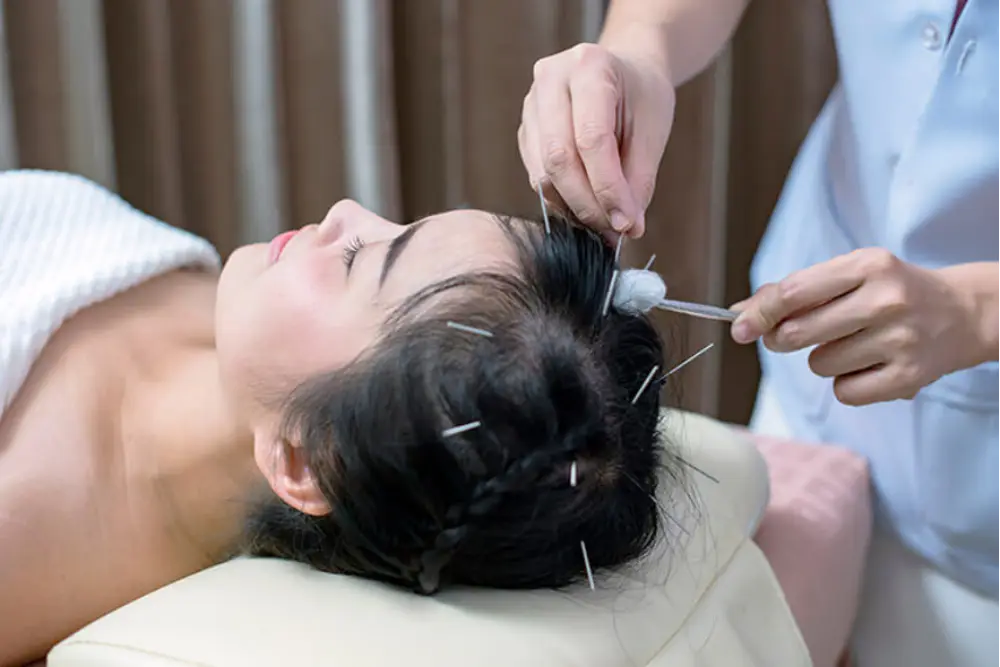
The Effectiveness of Acupuncture for Tension Headaches
The efficacy of acupuncture for tension headaches is supported by a growing body of clinical research. A 2016 Cochrane review, updated from its 2009 version, analyzed multiple randomized controlled trials (RCTs) and concluded that acupuncture is effective for preventing frequent episodic or chronic tension-type headaches. In two large trials, acupuncture added to usual care (e.g., painkillers) resulted in 48 out of 100 participants experiencing at least a 50% reduction in headache frequency, compared to only 17 out of 100 in the usual care group. When compared to sham acupuncture (where needles are inserted at incorrect points or do not penetrate the skin), true acupuncture reduced headache frequency in 52 out of 100 participants, versus 43 out of 100 for sham, with effects lasting up to six months in some studies.
A 2024 literature review of 12 clinical studies involving 659 participants further reinforced these findings, reporting significant reductions in headache frequency, intensity, and duration. One study noted a 68.2% reduction in monthly headache days after eight weeks of treatment. The review highlighted acupuncture’s ability to improve blood flow, modulate central sensitization, and reduce neuroinflammation, offering mechanistic insights into its effectiveness.
While some skeptics argue that acupuncture’s benefits may partly stem from a placebo effect, a 2012 meta-analysis of 18,000 patients across 23 high-quality RCTs found that acupuncture outperformed sham acupuncture for chronic pain conditions, including headaches. The study emphasized that acupuncture’s effects are comparable to those of non-opiate pain relievers, with a superior safety profile. Additionally, acupuncture’s benefits extend beyond pain relief, improving quality of life, reducing stress, and enhancing sleep—factors that are critical for managing chronic TTH.
Electroacupuncture, which involves applying a mild electric current to needles, has shown particular promise for severe or chronic TTH due to its effects on neuroplasticity and pain modulation. Laser acupuncture, a non-invasive alternative, may also be effective for needle-sensitive patients, though its mechanisms are less understood. Overall, the evidence suggests that acupuncture is a valuable tool for tension headache management, particularly when personalized to the patient’s symptoms and TOM diagnosis.
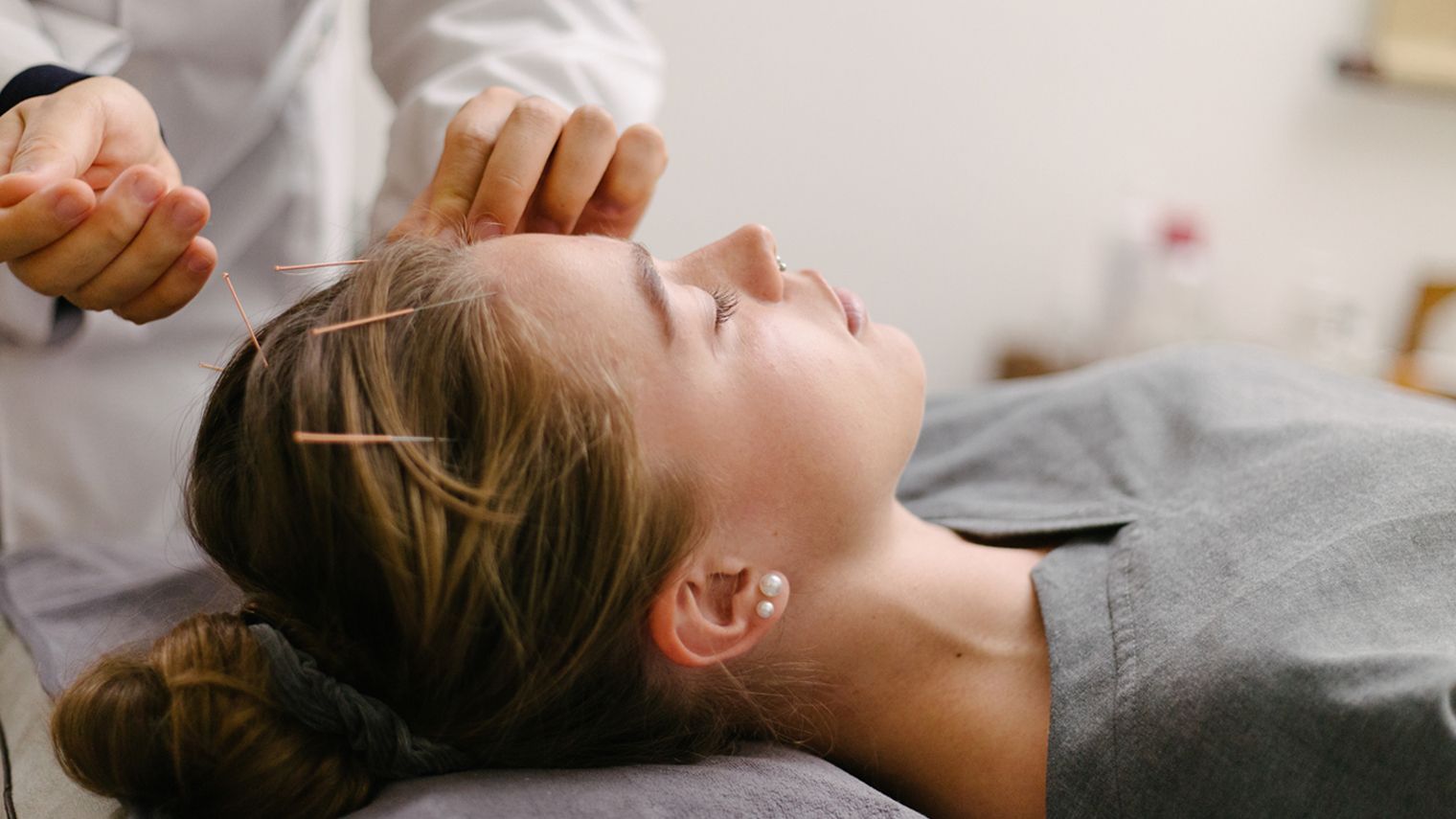
Key Acupoints for Treating Tension Headaches
Acupuncture’s effectiveness relies on the precise selection of acupoints, which are chosen based on TOM principles, the location of pain, and the patient’s overall health. A 2021 study using data mining technology analyzed 128 studies and identified the most frequently used acupoints for TTH, with a total application frequency of 763 times across 137 prescriptions. Below are the key acupoints commonly used to treat tension headaches, along with their locations, indications, and therapeutic effects:
- Fengchi (GB20) – Wind Pool
- Location: At the base of the skull, in the hollows between the two vertical neck muscles, just behind the ears.
- Indications: Headaches (especially occipital), neck stiffness, stress, and disorders of posterior cerebral circulation.
- Therapeutic Effects: Fengchi is a pivotal point for treating headaches due to its location on the Gall Bladder meridian, which traverses the head and neck. It promotes blood flow to the brain, relieves muscle tension, and expels “wind” (a TOM concept associated with pain and spasms). Studies show that needling GB20 increases myosin light chain kinase activity in the middle meningeal artery, enhancing cerebral circulation and reducing headache pain.
- Application: Needles are inserted at a slight angle toward the midline, with a depth of 0.5–1 inch. Electroacupuncture at 2/100 Hz may enhance effects by stimulating endorphin release.
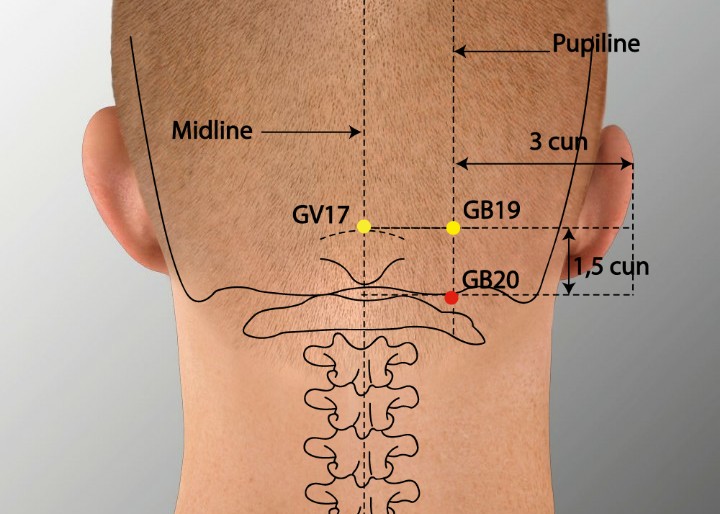
- Baihui (GV20) – Hundred Convergences
- Location: At the top of the head, at the midpoint of the line connecting the tips of the ears.
- Indications: Headaches (especially vertex pain), mental stress, insomnia, and memory issues.
- Therapeutic Effects: As a point on the Governing Vessel meridian, Baihui is known for calming the mind, lifting the spirit, and regulating Energy flow to the head. It is particularly effective for stress-related headaches and those caused by “Liver Yang rising” in TOM. Research indicates that GV20 acupuncture increases cerebral blood flow without affecting heart rate or blood pressure, making it safe for most patients.
- Application: Needles are inserted obliquely or subcutaneously, with a depth of 0.3–0.5 inches. It is often combined with other points for a synergistic effect.
- Taiyang (EX-HN5) – Sun
- Location: In the depression about one finger-width lateral to the midpoint between the outer canthus of the eye and the eyebrow.
- Indications: Temporal headaches, migraines, eye strain, and tension-related pain.
- Therapeutic Effects: Taiyang, an extra point not located on a standard meridian, is highly effective for headaches in the temporal region. It promotes the circulation of anti-pathogenic Energy, relieves tension, and addresses “wind” disorders. Its proximity to the head makes it a local point for direct pain relief.
- Application: Needles are inserted perpendicularly or obliquely, with a depth of 0.3–0.5 inches. Gentle manipulation is recommended to avoid discomfort.
- Hegu (LI4) – Union Valley
- Location: On the back of the hand, in the webbing between the thumb and index finger, at the highest point of the muscle when the thumb and finger are brought together.
- Indications: Headaches, facial pain, stress, and general pain relief.
- Therapeutic Effects: Hegu is one of the most versatile acupoints, located on the Large Intestine meridian. It is renowned for its ability to relieve pain, reduce stress, and promote the smooth flow of Energy. For tension headaches, Hegu helps relax muscles in the head and neck and is particularly effective for frontal pain. It is also used in acupressure for self-treatment.
- Application: Needles are inserted perpendicularly, with a depth of 0.5–1 inch. Caution is advised in pregnant women, as LI4 can stimulate uterine contractions.
- Taichong (LR3) – Great Surge
- Location: On the top of the foot, in the depression between the first and second metatarsal bones, about 1.5 inches from the web of the toes.
- Indications: Headaches (especially stress-related), irritability, insomnia, and hypertension.
- Therapeutic Effects: Located on the Liver meridian, Taichong is effective for headaches caused by “Liver Yang rising” or emotional stress. It calms the nervous system, reduces muscle tension, and promotes relaxation. Its distal location makes it ideal for balancing energy flow throughout the body.
- Application: Needles are inserted perpendicularly, with a depth of 0.5–0.8 inches. Gentle stimulation is often sufficient to achieve results.
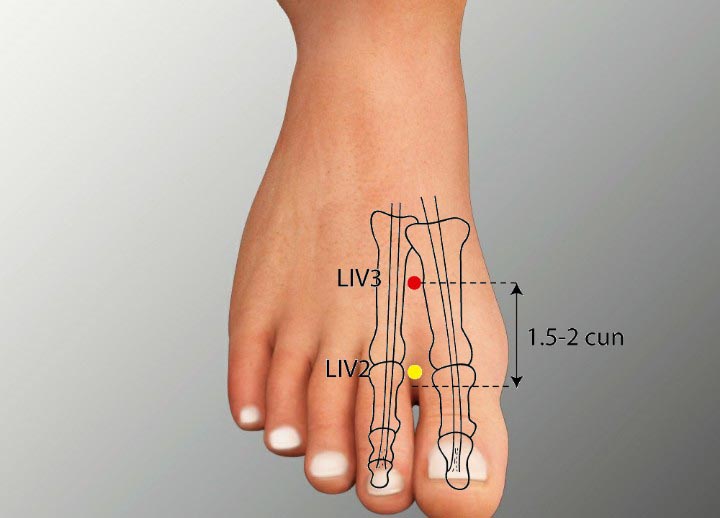
Additional Acupoints for Personalized Treatment
Depending on the patient’s TOM diagnosis and specific symptoms, additional acupoints may be used:
- Yangbai (GB14): Located on the forehead, one inch above the midpoint of the eyebrow. Effective for frontal headaches and sinus-related pain.
- Shuaigu (GB8): On the side of the head, above the ear, in the depression 1.5 inches above the apex of the auricle. Ideal for temporal or parietal headaches.
- Sanyinjiao (SP6): Three finger-widths above the inner ankle bone, on the inside of the leg. Used for headaches related to Energy and blood deficiency, often in women post-menstruation.
- Zusanli (ST36): Four finger-widths below the kneecap, one finger-width lateral to the shinbone. Supports overall energy and is used for headaches due to fatigue or weakness.
- Ahshi Points: Tender or reactive points identified through palpation near the site of pain. These are used to target localized muscle tension or trigger points.
Acupoint Selection Principles
In TOM, acupoint selection is guided by syndrome differentiation, which considers the patient’s overall health, headache location, and underlying imbalances (e.g., Liver Yang rising, Energy stagnation, or blood deficiency). Local acupoints (e.g., GB20, GV20) target the head and neck directly, while distal points (e.g., LI4, LR3) regulate systemic energy flow. Combining local and distal points ensures a holistic approach, addressing both symptoms and root causes.
How Acupuncture Sessions Are Conducted
A typical acupuncture session for tension headaches lasts 30–45 minutes and involves the following steps:
- Consultation: The acupuncturist assesses the patient’s medical history, headache patterns, and TOM diagnosis through pulse and tongue examination and questioning.
- Acupoint Selection: Based on the diagnosis, 4–10 acupoints are chosen, often combining local (head/neck) and distal (hands/feet) points.
- Needle Insertion: Sterile, hair-thin needles are inserted to a depth of 0.3–1 inch, depending on the point. Patients may feel a slight tingling or warmth, but discomfort is minimal.
- Needle Manipulation: The needles may be gently twisted or stimulated (manually or with electroacupuncture) to enhance Energy flow. Needles are typically retained for 20–30 minutes.
- Relaxation: Patients lie comfortably in a quiet, calming environment, allowing the body to respond to the treatment.
- Removal and Aftercare: Needles are removed, and the acupuncturist may provide lifestyle recommendations, such as stress management or dietary adjustments.
For optimal results, a course of 6–12 weekly sessions is recommended, with maintenance sessions every 1–2 months for chronic TTH. Electroacupuncture may be used for severe cases, while laser acupuncture or acupressure (manual pressure on acupoints) is suitable for needle-averse patients.
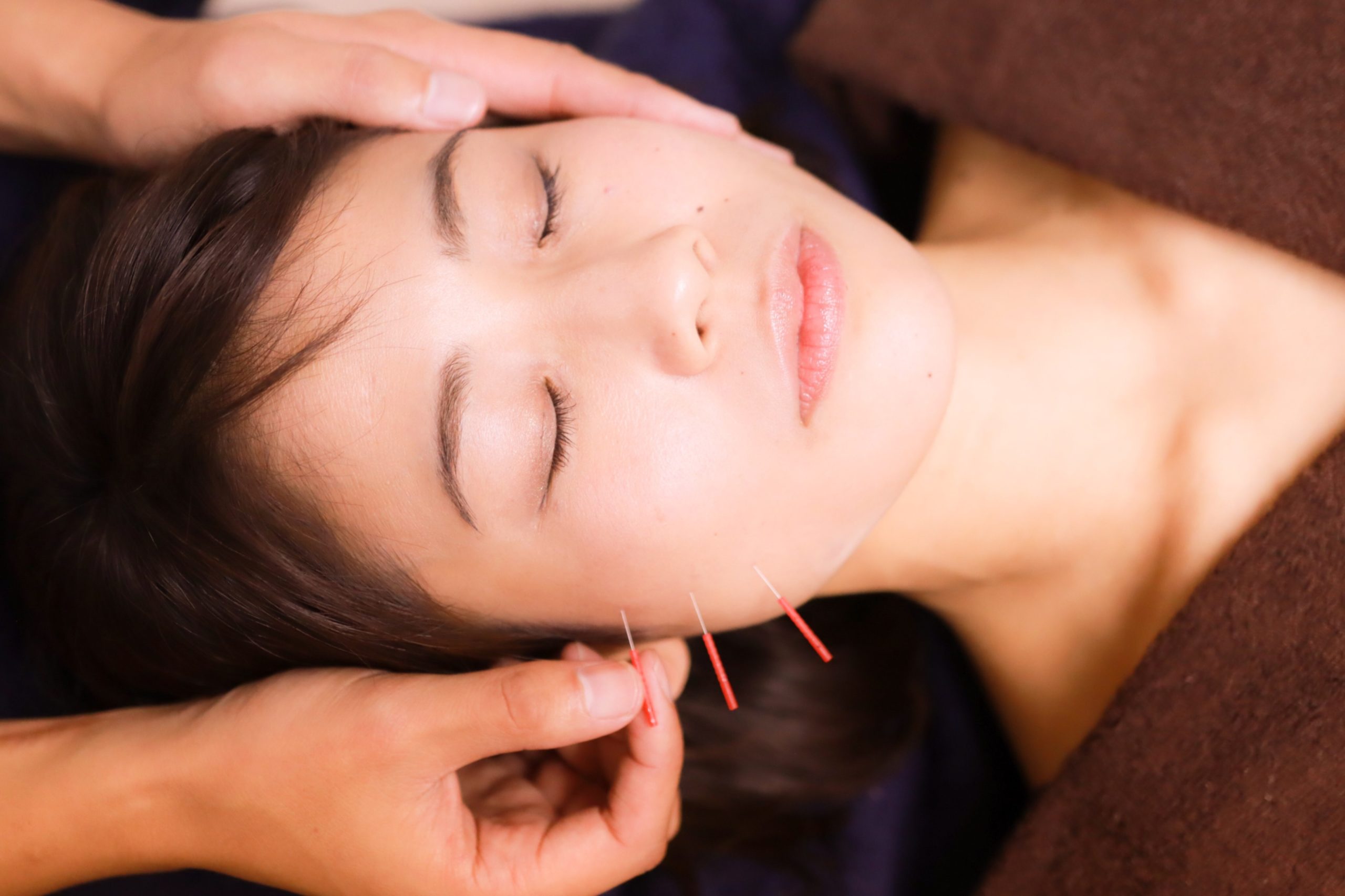
Safety and Side Effects of Acupuncture
Acupuncture is considered a safe treatment when performed by a licensed practitioner. A 2009 study of 229,230 patients reported very few adverse events, with minor side effects like temporary soreness, bruising, or mild dizziness occurring in less than 0.1% of cases. Serious complications, such as infection or pneumothorax, are extremely rare when sterile needles and proper techniques are used.
To ensure safety:
- Choose a licensed acupuncturist certified by a recognized body, such as the National Certification Commission for Acupuncture and Oriental Medicine (NCCAOM).
- Avoid acupressure or acupuncture on areas with skin conditions, recent radiation, or lymphedema.
- Inform your practitioner of any medical conditions, medications, or pregnancy, as certain points (e.g., LI4) are contraindicated in pregnancy.
Acupuncture is most effective when combined with complementary lifestyle changes and therapies to address the root causes of tension headaches:
- Stress Management: Practices like yoga, meditation, or deep breathing can reduce cortisol levels and prevent stress-related headaches.
- Posture Correction: Ergonomic adjustments at work and physical therapy can alleviate neck and shoulder tension.
- Massage Therapy: Targeting myofascial trigger points in the head, neck, and shoulders can enhance acupuncture’s effects. A 2015 study found that massage therapy reduced tension headache frequency and pain intensity.
- Hydration and Nutrition: Drinking adequate water and maintaining a balanced diet with magnesium-rich foods (e.g., nuts, leafy greens) can prevent headache triggers.
- Exercise: Regular physical activity, such as walking or stretching, improves blood flow and reduces muscle tension.
- Herbal Remedies: In TOM, herbs like green tea or formulas prescribed by a licensed herbalist may complement acupuncture for headache relief.
Collaborating with a healthcare provider to create a holistic treatment plan ensures comprehensive care, especially for chronic TTH sufferers.
Practical Tips for Getting Started with Acupuncture
If you’re considering acupuncture for tension headaches, here are some steps to begin:
- Find a Qualified Practitioner: Search for licensed acupuncturists in your area through professional directories or recommendations. Verify their credentials and experience with headache treatment.
- Prepare for Your First Visit: Wear loose clothing, eat a light meal beforehand, and avoid caffeine or alcohol. Be ready to discuss your headache history and overall health.
- Set Realistic Expectations: While some patients experience immediate relief, others require several sessions to notice significant improvements. Consistency is key.
- Track Your Progress: Keep a headache diary to monitor frequency, intensity, and triggers, which can help your acupuncturist tailor treatments.
- Explore Insurance Options: Some insurance plans cover acupuncture for pain management. Check with your provider to confirm coverage.
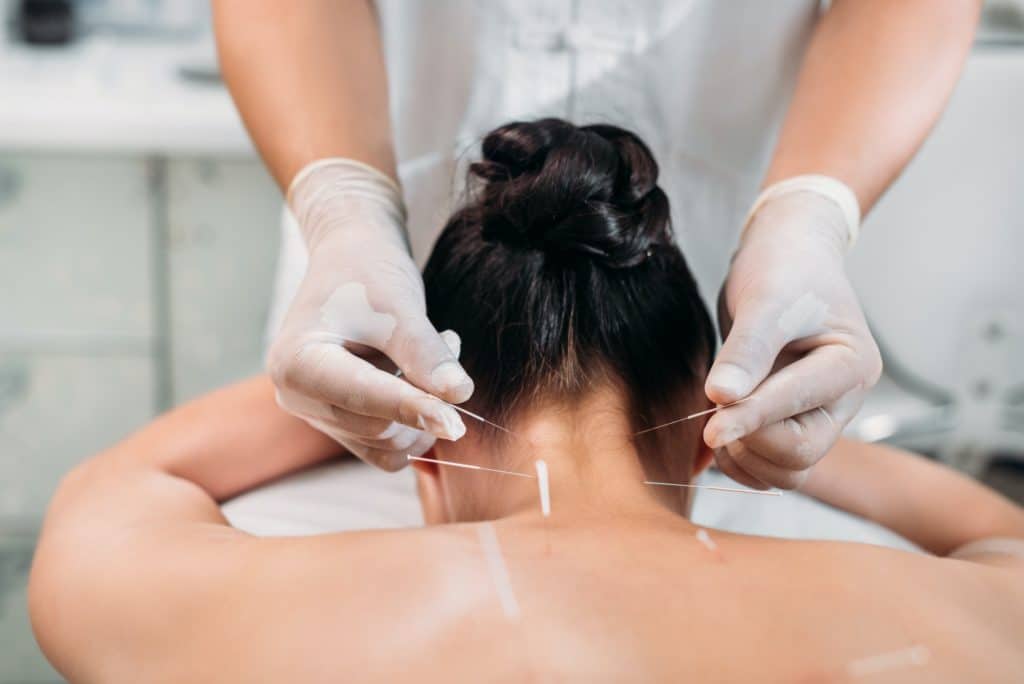
Conclusion: A Path to Natural Headache Relief
Tension headaches, with their pervasive impact on daily life, demand effective, sustainable solutions. Acupuncture offers a scientifically supported, drug-free approach to managing TTH, reducing headache frequency, intensity, and duration while addressing underlying triggers like stress and muscle tension. Key acupoints like Fengchi (GB20), Baihui (GV20), Taiyang (EX-HN5), Hegu (LI4), and Taichong (LR3) play a critical role in delivering targeted relief, guided by TOM principles and modern research. With minimal side effects and long-lasting benefits, acupuncture is a valuable tool for anyone seeking to reclaim their quality of life from the grip of tension headaches.
Ready to explore acupuncture for your tension headaches? Find a licensed acupuncturist near you and take the first step toward natural pain relief. Share your experiences or questions in the comments below to join the conversation about holistic headache management!
You need acupuncture treatment for Tension headaches? Contact Fuji Wellness now!
Fuji Wellness:
- Address: 132-0031 Matsushima 1-chome, 21-14, Tokyo, Japan
- Chat with us: Click here
- Email: sunnyphamsensei@gmail.com








